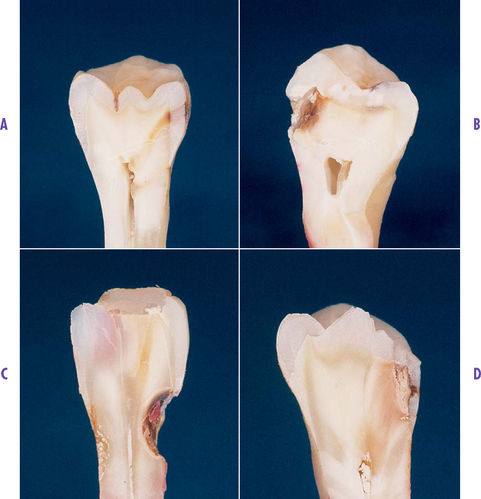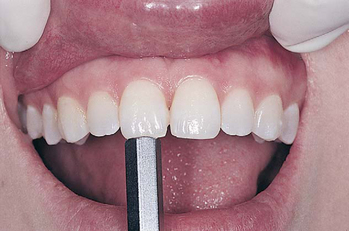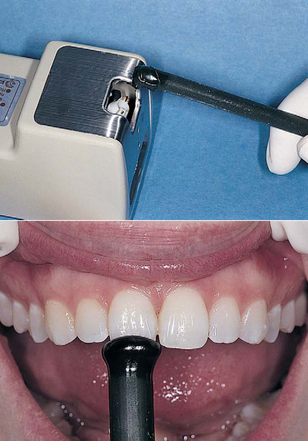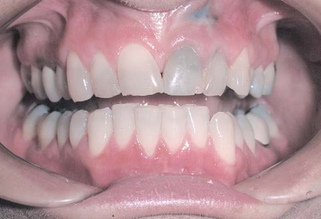CHAPTER 7 Endodontics
Root Canals, Dead Teeth, Inside of Teeth
Each tooth has a dental pulp (FIG. 7.1), commonly called the “nerve” by patients. The anatomy of the pulp is well known to dentists. Individual teeth have divisions of the pulp called root canals. Each tooth has one to four root canals. When these small pieces of soft tissue die or become injured or infected, the resulting pain can be as debilitating as almost any other physical condition experienced by humans.
What clinical conditions are commonly observed related to dead or dying teeth?
WHAT YOU SEE OR FEEL
Conditions, Signs, or Symptoms Related to Endodontics
1. Pressure Causes Pain
(FIG. 7.2). When chewing on the suspect tooth, significant pain is experienced. Pushing on the tooth or tapping on it with a hard object creates pain. The tooth may have periods of no pain. Antibiotic therapy usually reduces or eliminates the pain for a while. Pain on pressure may be indicative of a dead or dying tooth, but it may also indicate a cracked tooth or a tooth that has had recent heavy chewing or “bruxing” on it (see Chapter 11). If your dentist finds a dead or dying tooth, you have the following alternatives:
2. Heat Causes Pain
(FIG. 7.3). If hot foods cause significant pain in a specific tooth, it usually indicates a dead or dying tooth (pulp), and you have two alternatives:
3. Red, Pimplelike Projection on the Gums
(FIG. 7.4). This red, pimplelike projection on the cheek side or tongue side of the tooth near the tooth root end usually indicates that the tooth pulp (nerve) is dead, and that the infection has broken through the bone to the outside. This condition creates a fistula, or canal, from the tooth root end through the gums. Often, yellow pus can be expressed from the red projection without much pain, but the pus will return until therapy is completed. Treatment for the draining fistula may include the following:
Stay updated, free dental videos. Join our Telegram channel

VIDEdental - Online dental courses






